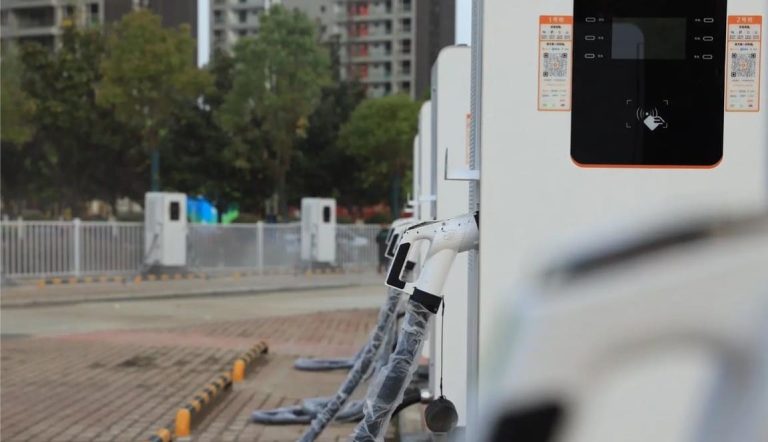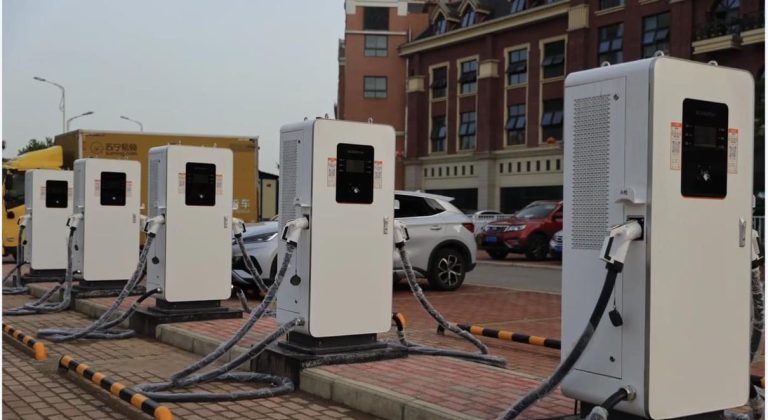Best location for ev charger in garage

Best location for ev charger in garage. There isn’t a one-size-fits-all solution because the best location for an EV charger in your garage depends on the particulars of your home and car.
An essential step for any owner of an electric vehicle is installing an EVSE, also referred to as an EV charger. Although the excitement is natural, mounting a unit on the wall is not the only step in a successful installation. To make sure the setup is not only operational but also safe, effective, and long-lasting for many years to come, it is necessary to carefully consider a number of factors. The main ideas and doable actions to determine the best place for your garage EV charger will be covered in this guide.
Core Principles: Safety, Compliance, and Convenience
Before diving into specific placements, it’s essential to understand the foundational pillars that should guide your decision-making process. These principles form the non-negotiable bedrock of a proper installation.
Safety is the paramount concern. Your garage houses not only your vehicle but also potentially flammable materials, tools, and your home’s electrical infrastructure. A poorly placed charger can become a hazard. It must be located away from any potential sources of damage, impact, or environmental risks. This means keeping it clear of areas where it could be struck by a moving vehicle or where garage doors might operate too close to it. Furthermore, the charger should be installed in a way that prevents the charging cable from creating a tripping hazard across walkways or doorways when in use.
Electrical compliance and professional installation are not optional. EV chargers, especially Level 2 chargers, draw a significant amount of power. The installation must be performed by a licensed electrician who can ensure it complies with all local and national electrical codes (like the NEC in the U.S.) and building regulations. A critical part of the electrician’s job is to assess your home’s electrical capacity to determine if your panel can handle the additional load of the charger or if an upgrade is necessary. Attempting a DIY installation or ignoring code requirements can lead to fire hazards, equipment damage, and voided warranties.
Convenience and ergonomics are what make the charging experience seamless. The charger should be positioned so that the charging cable can easily reach your vehicle’s charging port without being stretched taut or dragging on the ground. You shouldn’t have to reposition your car perfectly every time you want to plug in. The unit itself should be mounted at a comfortable height for plugging and unplugging the connector, typically with the connector holster around waist level.
Assessing Your Garage Layout and Electrical Capacity
The first concrete step is to thoroughly evaluate your garage space and understand your electrical system’s capabilities. This assessment will immediately rule out some locations and highlight others as strong candidates.
Start with a thorough inspection of your garage’s electrical panel. This panel’s capacity and condition are the most critical factors determining where and how your charger can be installed. Older homes, in particular, may have outdated fuse boards or panels already operating near capacity, which will likely need an upgrade before adding a high-demand appliance like an EV charger. The cost and complexity of running a new dedicated circuit from the panel to your desired charger location are heavily influenced by the distance between the two. A shorter distance generally means lower installation costs.
Next, map your garage’s physical layout. Identify where you typically park your EV and note the location of its charging port (front left/right, rear left/right). Measure the length of the charging cable that comes with your EVSE—most are between 4 and 7 meters (13-23 feet). This measurement will define the effective “charging zone” around the installed unit.
During this walk-through, also identify potential obstacles and hazards. Note the path of water pipes, gas lines, or any other utilities. Be aware of areas that are damp, prone to collecting water, or receive direct sunlight for extended periods, as these are unsuitable environments for an electrical device.
Key Considerations for Garage Layout & Electrical Capacity
| Factor | Description | Why It Matters |
|---|---|---|
| Electrical Panel | The heart of your home’s electrical system. | Determines if you can support a charger and influences installation cost. Older panels often require upgrades. |
| Parking Position | Where your EV’s charging port is located when parked. | The charger must be placed within cable’s reach of this port. |
| Cable Length | The length of the cable attached to your EVSE (e.g., 4-7m). | Defines the radius within which the charger can be effectively installed. |
| Obstacles | Walls, storage, water heaters, workbenches, etc. | The installation path from the panel to the charger must be clear. The charger needs clear space around it. |
| Environmental | Dampness, flooding risk, extreme temperatures. | Chargers must be installed in dry locations protected from the elements. |
Optimal Placement Strategies Based on Charging Port Location
With the assessment complete, you can now identify the most logical mounting locations based on how your car is positioned in the garage.
For vehicles with a rear-side charging port (a common placement for many models like Teslas, Volkswagens, and Fords), the best location is often on the side wall of the garage, aligned with the spot where the port is when the car is parked. For example, if your car’s port is on the rear-left side and you park nose-in, the left-side wall near the back of the garage would be ideal. This allows for a very short, direct cable path.
For vehicles with a front-side or front-center charging port (found on some models like the Chevrolet Bolt), a front-wall installation directly in front of the parking space can be very effective. This often provides a very short cable run straight to the port.
If your garage has a post or structural column near your parking spot, this can be an excellent mounting point. It keeps the charger off the main walls and can naturally position it closer to the vehicle. Ensure the column is structurally sound and that wiring can be run to it safely and discreetly.
In some cases, particularly with multiple EVs or a single charger serving two adjacent parking spots, a ceiling-mounted retractable system might be the best solution. This keeps cables completely out of the way when not in use and provides flexibility for different vehicle positions and port locations.
Critical Safety Clearances and Environmental Protection
Once you have a target area, you must ensure the exact mounting spot adheres to strict safety clearances and is protected from environmental damage.
Maintain proper clearances. The charger should be installed at least 12-18 inches (30-45 cm) above the floor to protect it from potential garage floor water (e.g., from a melting snow-covered car). There should also be ample clearance around the unit itself (often recommended at least 3 feet or 1 meter) for heat dissipation and to allow for easy access and maintenance.
Protect the charger from physical impact. The chosen location should have a low risk of being struck by your vehicle, a moving garage door, or any other object. Avoid mounting it directly next to the inner edge of the garage door where a carefully parked car might bump it, or in a narrow pathway where it could be hit by a bicycle or lawnmower. If impact is a genuine concern, installing a protective bollard or barrier in front of the unit is a wise precaution.
Ensure the environment is suitable. The installation area must be dry and not subject to extreme temperatures or direct, prolonged sunlight. While most home EVSEs are rated for outdoor use (typically IP54 or IP65, meaning they are protected against dust and water jets), installing them in a consistently damp or hot location can shorten their lifespan. If your garage is uninsulated and experiences temperature extremes, discuss this with your electrician, as it can affect performance.
Addressing Common Garage Challenges
Most garages aren’t empty, perfect cubes. You’ll likely need to problem-solve around common issues.
Limited space is a frequent concern, but modern wall-mounted chargers are designed to be compact. If space is extremely tight, consider a unit with built-in cable management to keep the cord neatly wrapped and out of the way when not in use. Installing the charger in a corner can also help free up wall space.
Wi-Fi connectivity is crucial for smart chargers that allow for scheduling, monitoring, and firmware updates. Before finalizing the location, check the strength of your Wi-Fi signal in that spot. If the signal is weak, you may need to improve your garage’s network coverage with an extender or choose a location closer to the house’s router.
For detached garages, the challenge is greater as the electrical run must go underground from the main house to the garage. This involves trenching and conduit work, significantly increasing the installation complexity and cost. This is a key detail to discuss during your electrician’s site assessment.
The Non-Negotiable: Professional Installation and Permits
The final, most critical step is to hire a qualified, licensed electrician. Do not attempt this installation yourself. The high voltages and currents involved are dangerous.
Your electrician will not only handle the physical installation but also secure any necessary permits from your local building department. The permit and inspection process ensures the work is done to code, protecting you, your family, and your home. The electrician will also test the system and provide you with a Certificate of Electrical Safety (CoES) or similar documentation to confirm the installation is compliant and safe.
Conclusion: A Methodical Approach for Long-Term Satisfaction
Choosing the best location for your EV charger is a deliberate process. Start by understanding your needs and your garage’s constraints. Prioritize safety and code compliance above all else. Factor in the practicalities of your vehicle’s design and your daily routine. By methodically working through these considerations and partnering with a professional electrician, you can identify a location that transforms EV ownership into a seamless, safe, and utterly convenient experience for years to come. The right spot will make plugging in your car as simple and thoughtless as parking it, which is the ultimate goal of home charging.




































































































































